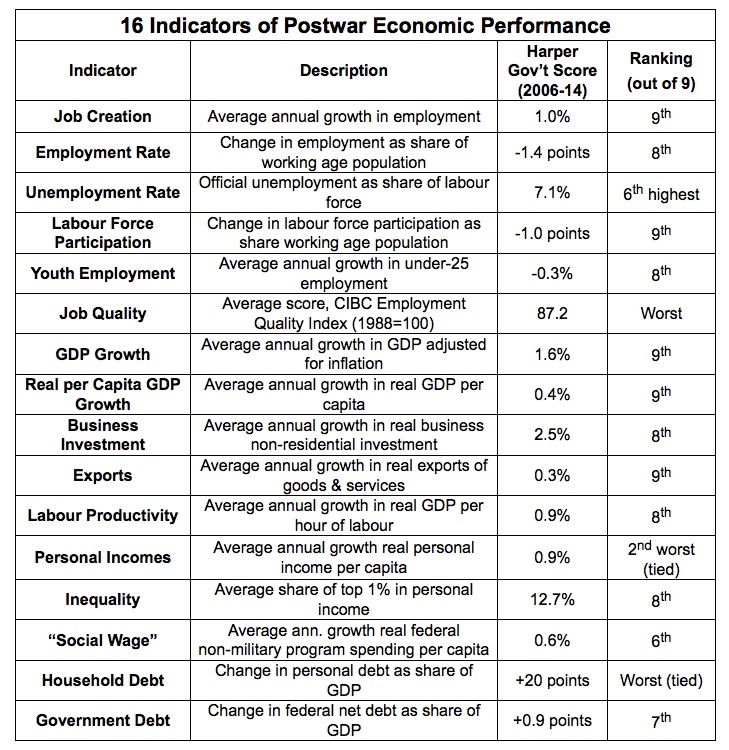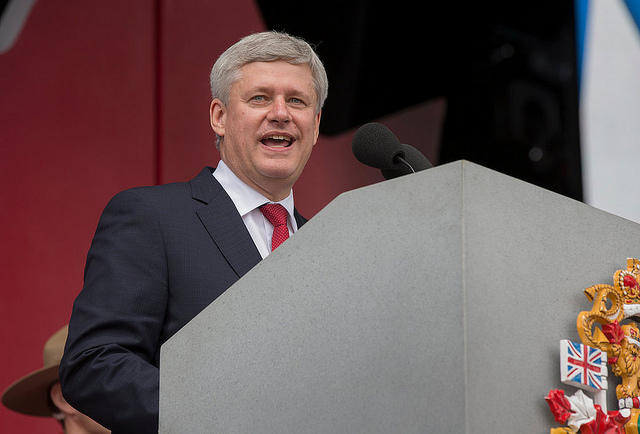Like this article? rabble is reader-supported journalism. Chip in to keep stories like these coming.
Speculation is intense that the unofficial election campaign we have already been experiencing for several months is about to become official: Ottawa is awash in rumours the writ may be dropped as early as this weekend, setting the stage for months of promises, accusations and photo-ops.
As always the economy will be the top issue. But with recent bad news, Conservative hopes of cashing in on their reputation as “the best economic managers” have suddenly become faint. Four straight months of falling real GDP, terrible export and investment numbers, and growing consumer pessimism, make their traditional chest thumping seem starkly at odds with the painful reality confronted by most Canadians. On September 1 we will learn if Canada is actually in an official recession (defined as two consecutive quarters of negative GDP growth). Even if we’re not, our performance has been perpetually disappointing.
However, this gap between triumphalist rhetoric and grim reality did not suddenly appear. In fact, the evidence has been piling up for years — long before the current slowdown — that Canada’s economic performance under the Harper Conservatives has been uniquely poor.
To further investigate this dissonance, I have worked with my Unifor colleague Jordan Brennan to compile an exhaustive empirical comparison of Canada’s economic record under the Harper government, and compared that record to previous post-war prime ministers. The full 64-page study was released today, and is available here.
Here’s what we did: The performance of the economy under each prime minister was described on the basis of 16 conventional and commonly used indicators of economic progress and well-being. These 16 indicators fall into three broad categories, summarized as follows:
- Work: Job creation, employment rate, unemployment rate, labour force participation, youth employment, and job quality.
- Production: Real GDP growth (absolute and per capita), business investment, exports and productivity growth.
- Distribution and Debt: Real personal incomes, inequality, federal public services, personal debt, and government debt.
These are not “touchy-feely” social concerns. These are the bread-and-butter indicators of real economic progress. All indicators are measured using annual data from 1946 through 2014, obtained from Statistics Canada and other public sources. Together these 16 indicators provide a composite portrait of overall economic performance and stability under each post-war government.
We considered the record of every prime minister who served at least a full year in office. (We didn’t think that John Turner had much chance, in 77 days, to really affect the country’s economic direction!) We compared changes, annual average rates of growth, or average levels for each variable, from the year each PM came into office, until the year they left.
If you have been swallowing the rhetoric about Conservatives naturally being the “best economic managers,” then these results are going to shock you.

For seven of the 16 indicators, the Harper government ranks last (or tied for last) among the nine post-war prime ministers. In six more cases, it ranks (or is tied) second-last. Among the remaining three indicators, the Harper government never ranks higher than sixth out of nine.
Considering the overall average ranking of each prime minister (across all 16 indicators), the Harper government receives an average ranking of 8.05 out of a worst-possible 9.0. That is dead last among the nine post-war governments, and by a wide margin — falling well behind the second-worst government, which was the Mulroney Conservative regime of 1984-93.
The very poor economic record of the Harper government cannot be blamed on the fact that Canada experienced a recession in 2008-09. In fact, Canada experienced a total of 10 recessions during the 1946-2014 period. Most governments had to grapple with recession at some point during their tenures — and some prime ministers had to deal with more than one. Instead, statistical evidence shows that the recovery from the 2008-09 recession has been the weakest (by far) of any Canadian recovery since the Depression. A uniquely weak recovery, not the fact that Canada experienced a recession at all, helps explains the Harper government’s poor economic rating.
This statistical review confirms that it is far-fetched to suggest that Canada’s economy has been well-managed during the Harper government’s time in office. To the contrary, there is no other time in Canada’s post-war economic history in which Canada’s economy has performed worse than it did under the Harper government.
For Canadians, the legacy of this government has been unemployment, insecurity and debt. It is definitely time for a change.
Read the full 64-page report (including a full description of methodology and a complete statistical appendix) from Unifor: “Rhetoric and Reality: Evaluating the Economic Record Under the Harper Government,” available at www.unifor.org.
Photo: pmwebphotos/flickr
Like this article? rabble is reader-supported journalism. Chip in to keep stories like these coming.



